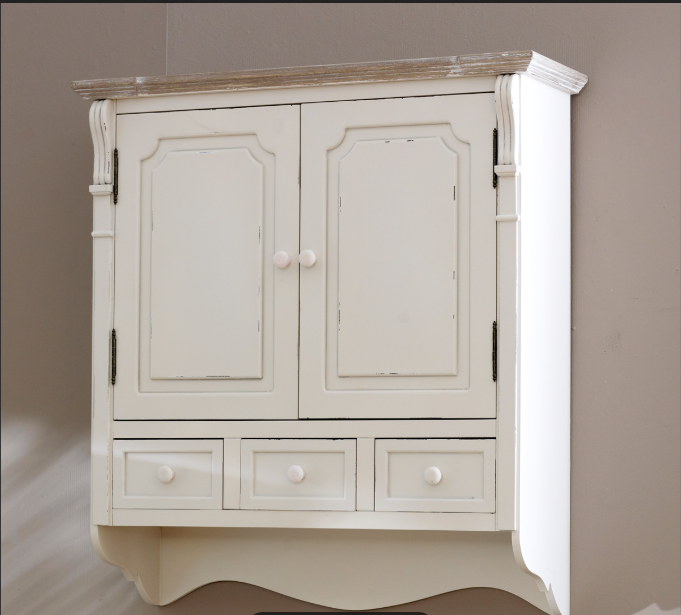Оценка пространства и потребностей для Навесной шкаф Дизайн
Измерение размеров стен и высоты потолков
Проектирование настенных шкафов начинается с точного измерения стен и высоты потолков. Самое первое, что нужно сделать, — взять детектор шпилек, чтобы обнаружить скрытые опоры за гипсокартоном, чтобы шкафы действительно оставались на месте. Если не определить эти несущие конструкции, мы просто угадываем, где их размещать, и в результате получаем шаткие шкафы, которые никому не нужны. После нахождения шпилек ещё раз снимите размеры стен, обращая внимание на препятствия, такие как оконные рамы или электрические розетки. Не забудьте также о высоте над головой. Дверцам шкафов нужно достаточно места, чтобы нормально открываться, иначе они будут задевать то, что свисает сверху. Дополнительное время, потраченное на эти измерения, окупится с лихвой позже, когда всё идеально встанет на свои места и будет выглядеть превосходно.
Определение основных требований к хранению
Знание того, что хранится в настенных шкафах, играет решающую роль при планировании решений для хранения. Начните с составления списка всего, что нуждается в хранилище, и распределите предметы по категориям, чтобы их было легко найти позже. Группируйте похожие предметы вместе — например, базовые кухонные инструменты, кастрюли и сковородки или сухие продукты. Однако потребности в хранении со временем меняются, особенно когда происходят изменения в жизненных обстоятельствах или увеличивается семья, поэтому заранее подумайте о возможных корректировках в будущем. Внутренние издания по дизайну часто содержат полезные советы по организации настенных шкафов, которые хорошо работают на практике и выглядят эстетично. Немногое предвидение поможет обеспечить полноценное использование этих пространств для хранения, а не их частичное заполнение или простой почти пустыми.
Анализ потока движения в компактных помещениях
При установке новых шкафов важно учитывать, как люди передвигаются в ограниченном пространстве, чтобы не загородить важные пути. Начните с наблюдения за тем, где люди обычно ходят по комнате, обращая внимание на участки, которые постоянно используются и должны оставаться свободными, особенно в тесных помещениях. Дизайнеры интерьеров часто рекомендуют оставлять проходы шириной около 90 см между мебельными элементами для удобства. В настоящее время существует множество отличных приложений, которые позволяют владельцам домов создавать цифровое планирование кухонных зон, наглядно демонстрируя, как различные варианты расположения шкафов влияют на циркуляцию пространства еще до реализации проекта. Этот дополнительный шаг на начальном этапе способствует сохранению хорошей функциональности и помогает избежать проблем в будущем, связанных с неудобными и неработающими решениями по хранению.
Выбор материалов для компактных настенных шкафов
Легкие, но прочные варианты материалов
При выборе материалов для маленьких настенных шкафов правильный выбор обеспечивает разницу между изделием, которое долго будет служить, и тем, которое придётся заменить раньше, чем ожидалось. Фанера и изделия из engineered wood выделяются тем, что их достаточно легко устанавливать, при этом они обладают достаточной прочностью, чтобы надёжно держаться на стенах. Прежде чем окончательно принять решение, обязательно ознакомьтесь с пределами допустимой нагрузки, указанными в технических характеристиках продукции. Полки, провисающие со временем, или сломанные крепления точно не оправдают экономии на первоначальных расходах. Те, кто заботится об окружающей среде, также должны обратить внимание на происхождение материалов. Композитные материалы из бамбука и древесина с сертификатом FSC становятся всё популярнее среди домовладельцев, стремящихся минимизировать негативное воздействие на окружающую среду. Сегодня больше людей задумываются об этом, потому что планета не в состоянии бесконечно поглощать отходы.
Выбор отделки, которая усиливает восприятие пространства
Способ отделки напольных шкафов действительно влияет на восприятие небольших пространств. Светлые цвета творят чудеса, потому что они отражают свет и создают впечатление, что комната больше, чем она есть на самом деле. Возьмем, к примеру, белый или светло-серый цвет — эти оттенки как будто расширяют стены. Более темные тона, напротив, визуально уменьшают пространство, создавая ощущение тесноты. Глянцевые поверхности также играют свою роль, поскольку отражают и рассеивают свет по комнате, что делает тесные помещения менее гнетущими. Прежде чем окончательно выбрать тот или иной вариант, возьмите несколько образцов краски и проверьте их в существующей обстановке. Посмотрите, как они взаимодействуют при различном освещении — днем и вечером. Такой практический подход помогает избежать несочетаемых сочетаний и создаёт ту тёплую и уютную атмосферу, которую каждый хочет видеть в своём доме. главная .
Интегрированные решения освещения для создания глубины
Добавление подсветки внутри настенных шкафов значительно улучшает видимость, а также визуально увеличивает глубину этих мест хранения. Большинство людей отмечают, что светодиодные ленты работают особенно эффективно, если их установить по внутренним краям шкафов. Регулируемые параметры позволяют направлять свет именно туда, где он нужен, обеспечивая тем самым лучшую функциональность без ущерба для стиля. Если речь идет о небольших комплектах настенных шкафов, то консультация со специалистом, разбирающимся в освещении, играет решающую роль. Дизайнеры интерьера или электрики, знакомые с организацией кухонных пространств, могут предложить практичные способы создания визуальной глубины в ограниченных местах, превращая тесные зоны хранения в более удобные и эстетичные пространства.
Вертикальные стратегии проектирования хранения
Конфигурации шкафов полной высоты
Шкафы в полный рост действительно преобразуют то, как мы используем пространство в тех крошечных квартирах, где каждый дюйм имеет значение. Они простираются от пола до потолка, обеспечивая огромное количество вариантов хранения, не занимая при этом ценную площадь пола, которую можно использовать для мебели или передвижения. При выборе дверей для этих шкафов на самом деле существует довольно существенная разница между распашными и раздвижными стилями. Распашные двери занимают дополнительное пространство при открывании, что не очень хорошо, если пространство и так ограничено. В таких случаях лучше подходят раздвижные двери, поскольку они просто скользят вдоль стены и не выступают ни в какую сторону. А говоря о гибкости, также целесообразно выбирать модульные конструкции. Это позволяет людям корректировать свои решения для хранения по мере изменения обстоятельств жизни. Семье, которая становится больше, могут понадобиться другие конфигурации, чем человеку, живущему одному, поэтому возможность расширять или переустраивать зоны хранения становится чрезвычайно важной для тех, кто сталкивается с изменяющимися жилищными условиями.
Регулируемые системы полок
Регулируемые системы стеллажей значительно повышают гибкость и эффективность использования пространства для хранения. Возможность перемещения полок позволяет размещать предметы самых разных размеров без лишних усилий. Дизайнеры интерьеров часто делятся своими любимыми способами максимально эффективного использования регулируемых полок в ограниченном пространстве, поэтому стоит прислушаться к их советам, чтобы лучше организовать пространство. Наклейка этикеток на контейнеры для хранения тоже помогает поддерживать порядок. Возможность быстро найти нужную вещь, не перерывая всё остальное, экономит время и избавляет от раздражения. Большинство людей убеждены, что контроль за тем, где что находится, предотвращает беспорядок, которого никто не хочет допустить у себя дома.
Встроенные против навесных вариантов
При планировании систем хранения очень важно правильно выбрать дизайн настенного шкафа. Основное решение заключается в том, использовать ли встроенные модули, размещённые в стенах, или настенные модели, крепящиеся сверху. Встроенные шкафы размещаются внутри пространства стены, создавая более чистые линии, что визуально увеличивает небольшие помещения. Настенные альтернативы проще в установке, кроме того, они доступны в различных вариантах отделки — от дерева до металла, поэтому подобрать их в стиль существующего интерьера не составляет особого труда. Получение консультации у дизайнеров интерьеров или ознакомление с онлайн-руководствами поможет определить, какой подход будет наиболее уместен в конкретной домашней обстановке. В конечном итоге это влияет не только на функциональность, но и на общий эстетический вид пространства.
Многофункциональные особенности навесных шкафов
Раздвижные рабочие поверхности
Настенные выдвижные рабочие станции становятся настоящим прорывом для тех, кто живет в тесных городских квартирах. По сути, они превращают пустые шкафчики на стенах в нечто гораздо более полезное, чем просто место для хранения. Большинство моделей могут использоваться как стол для работы или обеденный стол, когда это необходимо, что делает их очень удобными для людей, которым нужна гибкость в организации жилого пространства. Особенно важно в таких конструкциях — правильно реализовать механику, чтобы переход из режима хранения в рабочий режим происходил плавно и не приводил к беспорядку. Я видел несколько примеров, где система петель позволяет регулировать угол наклона, сохраняя при этом аккуратный и упорядоченный внешний вид. Дизайнеры интерьеров часто отмечают, что такая мебель помогает максимально эффективно использовать ограниченное пространство городских квартир. Самое лучшее? Эти изобретательные решения не жертвуют стилем во имя функциональности, сочетая практичность с современными элементами дизайна, которые идеально вписываются в сегодняшние компактные жилые пространства.
Скрытые отделения для бытовых приборов
Настенные шкафы сегодня получают довольно интересные и полезные улучшения — в них предусмотрены специальные отсеки для небольших бытовых приборов. Спрячьте микроволновку или кофеварку, и вся кухня сразу станет намного аккуратнее, особенно если пространство ограничено. Однако важно позаботиться о вентиляции при создании таких укрытий, иначе внутри может стать слишком жарко, и приборы, спрятанные туда, могут выйти из строя. Владельцы домов, которые уже попробовали этот подход, в восторге от того, как они экономят пространство и при этом сохраняют эстетичный вид кухни. Одна семья даже отметила, что наконец смогла разместить все свои кухонные гаджеты, не создавая беспорядка. Такие умные идеи хранения стали особенно популярны среди дизайнеров, потому что они позволяют эффективно использовать каждый сантиметр жилого пространства, не портя внешний вид комнаты.
Вращающиеся механизмы для доступа к углам
Добавление вращающихся подносов, которые мы называем ленивыми Сьюзан, полностью меняет способ хранения вещей в напольных шкафах. Они позволяют брать предметы с раздражающих задних углов, где всё забывается, так что ничего не пропадает зря. Принцип работы этих вращающихся полок делает шкафы гораздо эффективнее в использовании пространства, что особенно важно, когда кухни тесные. Специалисты по планировке пространства постоянно подчёркивают, что такое решение действительно имеет значение для узких мест. Владельцы домов, которые устанавливают такие вращающиеся системы, обнаруживают, что у них вдруг появляется место для множества дополнительных тарелок и приспособлений, без ощущения переполненности. Кроме того, все замечают, насколько чище выглядит вся зона, так как ничего больше не теряется где-то в глубине. Удивительно, насколько простое вращение может помочь в организации пространства.
Рассмотрение факторов установки для маленьких помещений
Распределение веса на гипсокартоне против бетона
Понимание того, как распределяется вес на точки крепления, играет большую роль при установке шкафов на различные стены, такие как гипсокартон или бетон. Большинство гипсокартонных перегородок не рассчитаны на значительные нагрузки, поэтому людям часто приходится использовать прочные анкеры или бабочки, чтобы удержать полки на стене. Бетонная стена — это совсем другая история. Хотя бетон обеспечивает надежную опору для установки мебели, работать с бетоном приходится с использованием специализированных инструментов, таких как сверла по камню, и крепежных систем, которые действительно надежно фиксируются в материале. Прежде чем сверлить отверстия, ознакомьтесь с местными нормативами, касающимися максимальной нагрузки на квадратный дюйм для разных типов стен. Хороший подрядчик знает, какие крепежные элементы лучше всего подходят для конкретного веса шкафов, что позволяет избежать ситуаций, когда, открывая полку, человек видит, как его любимая кружка падает и летит прямо на пальцы ног.
Стандарты доступности для высоких размещений
Установка напольных шкафчиков вверху означает, что сначала следует ознакомиться со стандартами доступности, если каждый должен комфортно дотягиваться до них. Хорошими вариантами являются выдвижные полки или даже небольшие складные табуреты рядом, чтобы дети или люди с ограниченной подвижностью могли достать необходимое. Американский закон о доступности для инвалидов содержит довольно четкие правила по этим вопросам, и существует множество онлайн-руководств, которые подробно показывают, как правильно измерять и устанавливать все это. Учет инклюзивности с самого начала избавит от головной боли позже, когда кто-то застрянет, пытаясь достать что-то из недоступного места. Кроме того, помещения, спроектированные таким образом, просто выглядят лучше в целом, потому что всем действительно хочется проводить там время, вместо того чтобы избегать определенных зон вообще.
Часто задаваемые вопросы
Какие материалы лучше всего подходят для легких навесных шкафчиков?
Фанера и древесностружечные материалы — отличные выборы, так как они предлагают баланс малого веса и высокой прочности, идеальный для легкого крепления на стену.
Как я могу убедиться, что навесные шкафчики доступны для всех?
Интеграция функций, таких как опускаемые стеллажи или использование стремянок, а также консультация руководящих принципов ADA может помочь сделать шкафчики доступными для всех.
Каковы преимущества использования напольных шкафов в маленьких помещениях?
Напольные шкафы максимально используют вертикальное пространство без потребления площади пола, что делает их идеальными для маленьких квартир.
Как избежать препятствий для потока движения с помощью навесных шкафов?
Наблюдение за движением и использование инструментов планирования пространства может помочь вам визуализировать и спланировать размещение шкафов без нарушения потока движения.


